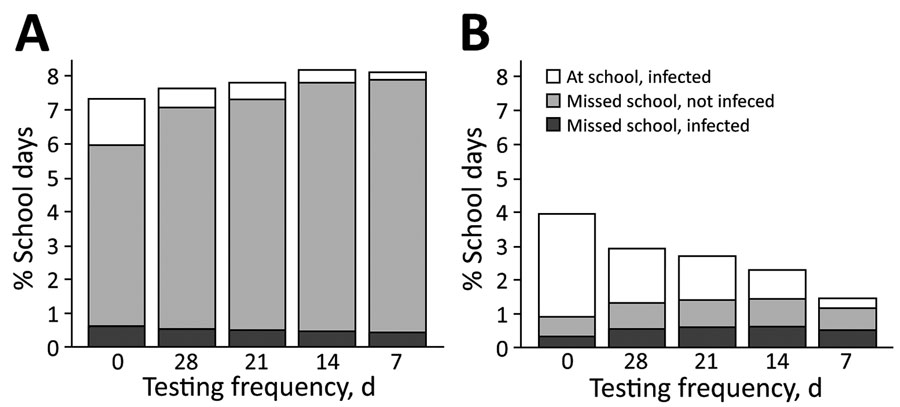Volume 29, Number 3—March 2023
Research
COVID-19 Test Allocation Strategy to Mitigate SARS-CoV-2 Infections across School Districts
Figure 2

Figure 2. Projected days of school missed in a COVID-19 test allocation strategy to mitigate SARS-CoV-2 infections across 11 school districts in the Austin Independent School District, Austin, Texas, USA. The graphs demonstrate the expected proportion of school days missed due to isolation or quarantine over a 10-week period in a school with 500 students under 2 scenarios: A) assuming the household and classroom of each detected case is quarantined; or B) assuming only households (not entire classrooms) are quarantined. Estimates assume a moderate (reproduction number = 1.5) in-school transmission risk in the absence of proactive or symptomatic testing, isolation, and quarantine. All projections assume that isolation and quarantine periods last 14 days. In addition to on-campus transmission, persons might be exposed in the surrounding community at a rate of 35 new daily infections/100,000 population. The results are based on 300 stochastic simulations for each scenario.